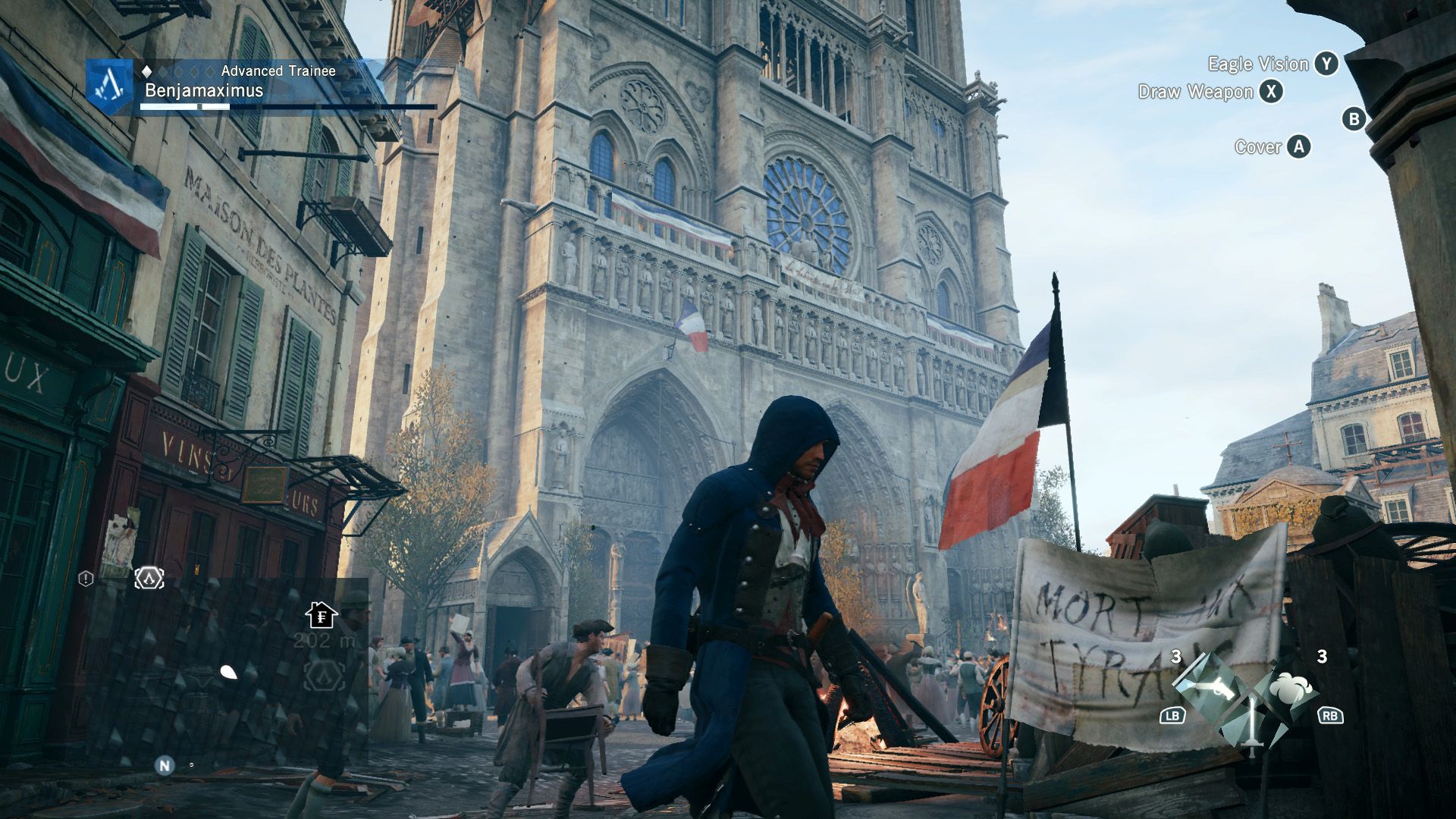Learning about Paris and the past in Assassin's Creed Unity

In Now Playing PC Gamer writers talk about the game currently dominating their spare time. Today, Ben accidentally learns things while playing a videogame.
I’ve long been an advocate of not reading in games, just as I’ve long been an advocate of not using books as frisbees or strapping pages to my feet and sliding around my kitchen. I’m either in the mood for playing, or I’m in the mood for reading. Assassin’s Creed Unity, however, has me thinking maybe one can enhance the other. Can it be?
The answer is yes, and it’s all thanks to the Database, Unity’s in-game encyclopedia. When players approach a landmark, interact with a famous face, or encounter a historic event, a notification pops up leading to a colourful description. As I swagger past an inconspicuous entrance to the labyrinthine catacombs of Paris, I indulge the Database and read up on how it once functioned as a marble mine, until the bones from heaving graveyards started spilling into people’s basements and the police chief ordered some six million skeletons into this sprawling tunnel system. This inspires me to take a peek.

Exiting the stuffy maze I begin a story mission and learn about the notoriously indecisive King Louis XVI, a man who held a position like one would hold greasy billiard balls, and whom, in the words of one deputy, “spent his whole life saying each evening that he was mistaken that same morning.” King Louis XVI instantly transforms from a white-wigged NPC in a chaotic world to a contextualised figure rooted in time.
Next I’m tasked with joining the shadowy Assassins at the Sainte- Chapelle, but rather than looking forward to donning wrist blades so I can flick them out at poor people, the exciting part is reading about how the magnificent church only took two years to build, how it was ransacked for its relics in the Revolution, and how in the 19th century it turned briefly into a flour warehouse.

David Starkey? Who needs him! Unity’s Database deconstructs the history of an entire nation, and it does so in a way that’s not only concise but incredibly engaging. The only drawback is its in-game author, Danny Wallace’s sardonic Shaun Hastings. His entries are full of unfunny footnotes—like describing the allée des Veuves as a ‘single’s hotspot’ because women in mourning gathered there—and crap asides such as “trying to get a phrase to catch on is like oiling a hammer and expecting a cat to marry it”.
Still, these are easy enough to ignore. As I ascend the spire of Basilique Saint- Denis and look out over Paris, I no longer see a complex of indikit buildings. I see a city built brick by brick, steeped in history, and with a story around every corner. Reading, I’ve decided, is très bonne.
Keep up to date with the most important stories and the best deals, as picked by the PC Gamer team.

